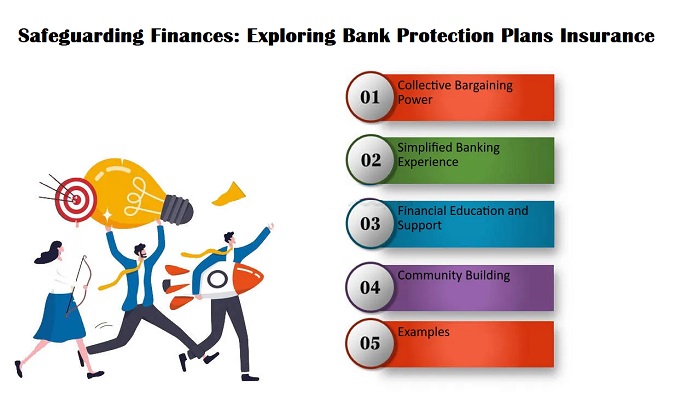Saving Finances: Bank Protection Plans Insurance Leave a comment
Introduction: In an era where financial institutions face ever-evolving risks, the need for robust protection against potential threats is paramount. Bank protection plans insurance, also known as financial institution bond insurance, serves as a crucial safety net for banks, offering comprehensive coverage against a myriad of risks ranging from internal fraud to external cyber threats.
This article aims to delve deep into the intricacies of bank protection plans insurance, shedding light on its significance, coverage, regulatory aspects, and emerging trends shaping the financial landscape.
Bank Protection Plans Insurance Bank protection plans:
insurance is a specialized form of coverage designed to shield financial institutions, primarily banks, from financial losses stemming from various risks and threats. These risks can include employee dishonesty, forgery, theft, cyber fraud, extortion, and other criminal activities that may compromise the integrity and stability of a bank’s operations.
Significance of Bank Protection Plans Insurance The significance of bank protection plans insurance cannot be overstated in today’s financial landscape. For banks, maintaining trust and confidence among customers, shareholders, and regulatory authorities is paramount. Any breach of trust, be it through internal fraud or external cyberattacks, can have far-reaching consequences, including reputational damage, financial losses, and legal liabilities.
Bank protection plans insurance serves as a critical risk management tool, providing a layer of financial protection against unforeseen events that could jeopardize the bank’s assets, liabilities, and reputation. By mitigating potential losses resulting from fraudulent activities, theft, or cyber incidents, this insurance instills confidence among stakeholders and helps safeguard the long-term viability of the bank.

Coverage Bank protection plans insurance offers comprehensive coverage tailored to the unique risks faced by financial institutions. The coverage typically includes:
Employee Dishonesty: Protects against losses resulting from dishonest acts committed by employees, such as embezzlement, theft of cash or securities, or fraudulent transactions.
Forgery or Alteration: Covers losses arising from the forgery or alteration of negotiable instruments, checks, drafts, or other financial documents.
Computer Fraud: Safeguards against losses caused by unauthorized access to the bank’s computer systems, hacking, malware, phishing, or other cyber-related incidents.
Funds Transfer Fraud: Provides coverage for losses resulting from fraudulent instructions or unauthorized transfers of funds, whether initiated internally or externally.
Counterfeit Currency: Protects against losses incurred due to the acceptance of counterfeit currency or counterfeit financial instruments.
Securities Fraud: Covers losses resulting from fraudulent activities related to the bank’s securities, investments, or trading activities, including unauthorized trading or misrepresentation of investment products.
Extortion: Offers protection against losses resulting from threats of extortion, ransom demands, or other coercive tactics.
Regulatory Framework The regulation of bank protection plans insurance varies across jurisdictions, with regulatory authorities imposing certain requirements to ensure adequate protection for depositors and the stability of the financial system. In the United States, for instance, the Federal Deposit Insurance Corporation (FDIC) regulates bank insurance activities and mandates that insured banks maintain adequate insurance coverage to mitigate potential losses.
Regulatory requirements may include minimum coverage limits, risk assessment criteria, reporting obligations, and compliance with specific insurance provisions. Additionally, regulatory authorities may conduct periodic examinations or audits to assess the adequacy of a bank’s insurance coverage and risk management practices.
Emerging Trends As the banking industry evolves and new risks emerge, the landscape of bank protection plans insurance is continuously evolving. Some emerging trends shaping the future of bank protection plans insurance include:
Cybersecurity Enhancements:
With the increasing frequency and sophistication of cyber threats, banks are prioritizing cybersecurity enhancements and investing in specialized insurance coverage to protect against cyber risks. This includes coverage for data breaches, ransomware attacks, business interruption, and cyber extortion.
Regulatory Compliance Focus:
Regulatory scrutiny of the banking industry continues to intensify, driving banks to prioritize compliance with evolving regulations and standards. As a result, there is a growing demand for insurance products that specifically address regulatory compliance risks, including fines, penalties, and legal expenses associated with non-compliance.
Vendor Risk Management:
Banks increasingly rely on third-party vendors and service providers to support their operations, exposing them to additional risks. To mitigate vendor-related risks, banks are seeking insurance coverage that extends to vendor activities, contractual liabilities, and supply chain disruptions.
Environmental, Social, and Governance (ESG) Considerations:
As environmental, social, and governance factors gain prominence in the financial industry, banks are incorporating ESG considerations into their risk management practices and insurance strategies. This includes assessing the environmental and social impact of their operations, managing climate-related risks, and ensuring compliance with ethical and governance standards.
Conclusion:
Bank protection plans insurance plays a vital role in safeguarding the financial interests of banks and mitigating the diverse risks inherent in the banking industry. By providing comprehensive coverage against fraud, theft, cyber threats, and other criminal activities, this insurance helps banks maintain trust, comply with regulatory requirements, and protect their assets and reputation.
As the financial landscape continues to evolve, the demand for innovative insurance solutions tailored to emerging risks will likely grow, underscoring the importance of proactive risk management and insurance planning for financial institutions.
